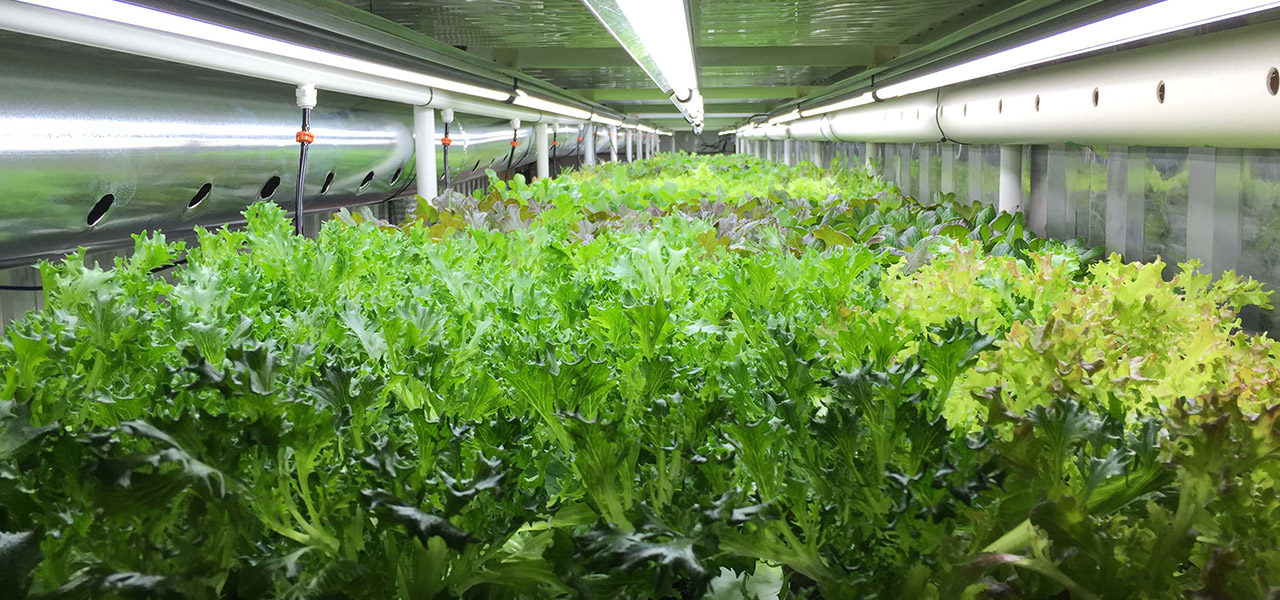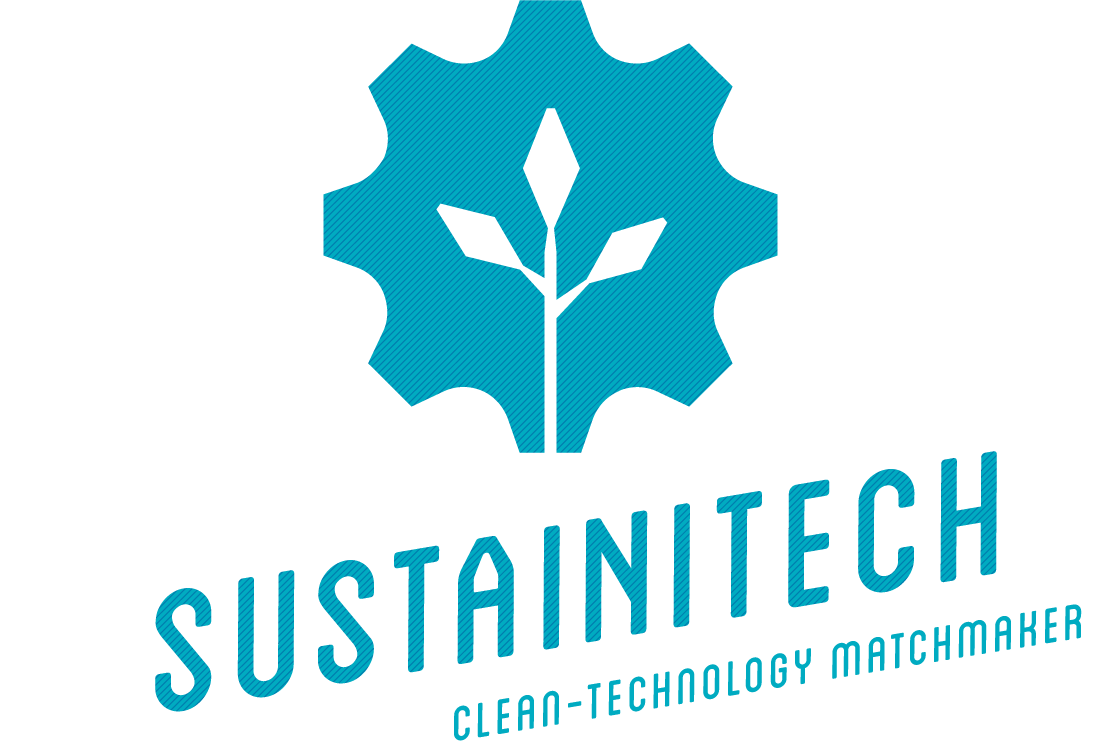

Sector: Environment, Food Security
The Future of Farming
For nearly a decade, Joey Hundert has been perfecting the art of growth—in business, technology, even literal agricultural. As the Founder and CEO of Sustainitech, a purpose-driven AgTech company, Hundert has been on a long journey to develop containerized aqua- and aero-ponic farms as an answer to climate instability and food insecurity.
“Looking at a climate unstable future, my concern has been how do we continue to provide quality of life to billions of people in a way that doesn’t deplete resources as quickly as we have in the last few hundred years?” he says. “Indoor farming to me has the potential to answer these challenges in a few ways, including moving agricultural production closer to where it’s consumed.”
For Hundert, it all started in a conversation with the former Mayor of Fort McMurray, a mid-sized municipality located more than 400 km north of Edmonton. She mentioned the challenges of living in a Northern community with only one road in and one road out. The community was considered a food desert, limited by climate and location in the crops that could be grown there.
“She just asked me, ‘What happens if the highway shuts down? How many days do you think our grocery stores should be empty? What do we do about that?’” he says. “That really made me think about how you could create climate-impervious agriculture and build agricultural production that could withstand minus 35 in the winter, and then plus 35 in the summer.”
Curiosity sparked, Hundert set to work developing Sustainitech’s first containerized farms. Using a vertical farming system custom-built in insulated shipping containers, Sustainitech developed an aquaponic garden system, which uses plants, fish and naturally occurring bacteria to grow vegetables—all without soil. After nine months in production, the containers were delivered to Fort McMurray. To Hundert’s delight, they worked.
“It was quite the thing to walk up to the system and open these giant doors from -35 degrees outside in Fort McMurray. The steam would just come billowing out of them from the temperature change, and you would close the doors behind you and suddenly just be in this super well-lit tropical environment,” he says. “Once I saw that was possible, that’s when we solidified Sustainitech as its own corporate entity.” SEF provided a small startup loan.
Soon after this first success in Fort McMurray, another curious opportunity presented itself, this time in conversation with a Manhattan-based Orthodox Jewish produce company. The company was interested in insect-free produce and hoped Hundert could help. Kosher rules expressly forbid the consumption of insects, which made the growth and harvesting of leafy greens, which are prone to insect infestation, nearly impossible.
“They’d heard about what I was up to and they just asked, ‘well, can you grow produce without any bugs on it?’” he says. “And I said, ‘Well, we’ve got a better shot than anybody.’”
Once again, Hundert set to work, redesigning the indoor farming systems Sustainitech had previously developed from the ground up. Rather than using aquaponics, the Kosher system used aeroponics, a soil-free variant in which the roots of plants are sprayed with a fine mist of water and nutrients. The container was under pressure, so that if the doors were opened, an air current would rush out, making it nearly impossible for insects to enter.
When the first crops were ready, a team of Orthodox rabbis flew to Edmonton to inspect the produce. As they started a process of carefully harvesting and examining the leaves, Hundert anxiously awaited the results.
“They had these magnifying glasses, almost like jewelers, and they looked over every leaf over a light box to see if there were any bug parts on the leaves. If they had found even one, the whole container would have been not kosher,” he says “They did this for hours, and I’ll never forget the moment where the lead of the group put down his magnifying glass and said, ‘No bugs.’ And then quick, they set up blessing and a prayer and started almost melting down to finally have fresh spinach again after years without it.”
Pleased with the success of this first Kosher crop, Sustainitech set to work exporting vegetables to shelves across New York City. Over the next few years, Sustainitech continued to perfect and scale up its containerized farms and technology, partnering with other grocers and meal delivery services along the way. The crops they were producing not only offered consumers a choice with a lower carbon footprint, but one that tended to last longer as well. One of the most important features of indoor farming, Hundert notes, is that the spoilage rate of the produce tends to be much lower than conventional crops. While traditional produce might have a spoilage rate of 35% or more, indoor farms offer a rate closer to 0%.
“In addition to food that has to be shipped from across the country or around the world, there is a whole greenhouse gas liability on the spoilage side that is poorly understood. But the benefit of growing indoors is the plants are in plant heaven, their whole life. There’s no dust or bugs, and the plants don’t go through as many supply chain hands where there are different temperatures to cause condensation in the package, which is what begins the produce breaking down,” he says.
Yet even as Sustainitech grew with operations and partnerships across Canada, Hundert’s curiosity was still active. He wanted to do more. This time, however, he wanted to focus outside of the agriculture industry to find an efficient use for the heat and energy given off by industrial sources.
“For instance, most power plants are only 30-35% efficient and the rest goes up as heat. So I’ve been very curious how to get those things to pair. It turns out it’s really, really hard,” he laughs.
Although it was a challenge, in time, Hundert and the team at Sustainitech solved it, finding a way to adapt their technology to partner with large industrial energy producers like power plants, natural gas plants, or petrochemical companies. This type of partnership not only provides an opportunity to capitalize on the waste energy from these large industrial producers, but to offset carbon emissions from them as well.
“We figured out how to gather waste energy put that energy to work in indoor farming and offset our own energy utilization by a lot. And that creates thousands of metric tons of offsets for the energy partner too,” he says. “In essence, we’re able to harness the waste energy off of say, a natural gas plant, to really drive everything that’s going on in our indoor farms.”
In 2020, Sustainitech took its first steps to making this goal of harnessing waste energy a reality. It partnered with ARC Resources, a Calgary-based natural resource firm, in developing Sustainitech Alberta Complex One (SACO One), a 120,000 square-foot indoor farm. The farm will make use of waste energy from ARC Resources’ Gold Creek Natural Gas Plant to produce crops for Canadian consumers.
In addition to having a positive ecological impact, the project will have a lasting social impact as well. By partnering with the First Nations in and around Gold Creek, Sustainitech hopes to provide long-term long-term jobs. SEF has invested in this new project.
With construction at Complex One now underway, Hundert shows no signs of slowing down. He has already begun planning the next four Sustainitech facilities to be built within the next five years, with Complex Two expected to be seven times larger than the first.
“With the climate getting weirder and weirder, the reality is some crops are going to need to be brought fully indoors,” he says. “We’re just trying to be ready for that.”
After thirteen years in the Executive Director chair at SEF, it is time for me to move on.
Every day SEF works with entrepreneurs—non-profits, for-profits, cooperatives – determined to find a better way to do things, to create a sustainable economy leading to a more inclusive community that works for everybody.